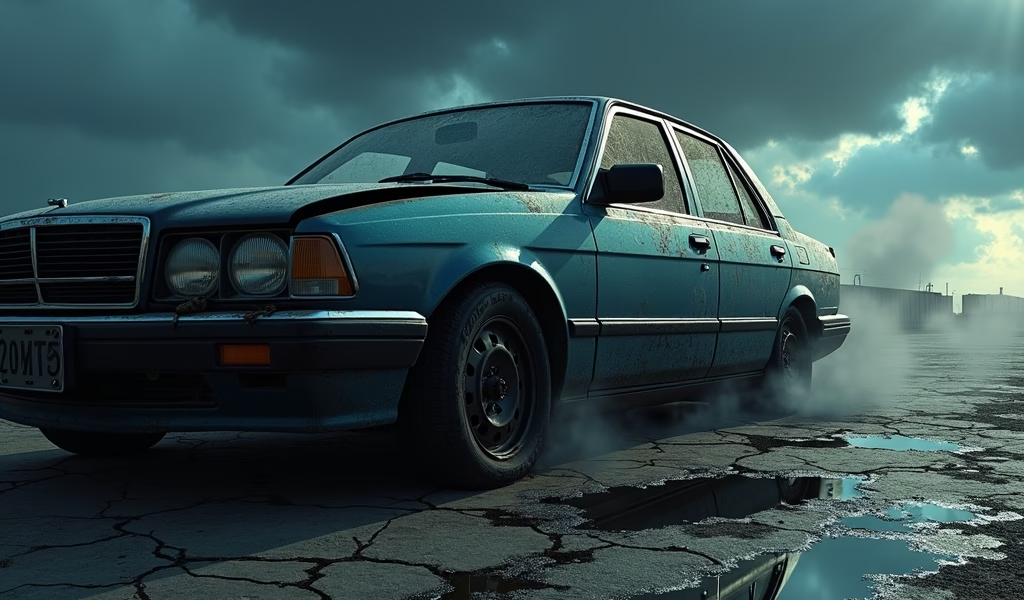Overview
This article details five critical car maintenance areas that prevent accidents and reduce legal liability: brake inspections, tire care, fluid checks, light maintenance, and windshield care. Properly maintaining these systems not only saves lives but provides legal protection through documentation that demonstrates responsible vehicle ownership, as evidenced by crash attorneys who regularly see preventable accidents caused by maintenance neglect.
Table of Contents
- Introduction: Why Car Maintenance Matters to Auto Crash Attorneys
- The Direct Link Between Maintenance and Road Safety
- Tip #1: Never Skip Brake Inspections
- Tip #2: Tire Care Could Save Your Life
- Tip #3: Essential Fluid Checks That Prevent Disasters
- Tip #4: Light and Signal Maintenance
- Tip #5: Windshield and Wiper Care
- The Legal Value of Maintenance Records
- Conclusion
- Frequently Asked Questions
Introduction: Why Car Maintenance Matters to Auto Crash Attorneys
As a master mechanic with 25 years under my belt, I’ve seen how proper maintenance can be the difference between life and death on the road. What many drivers don’t realize is that auto crash attorneys see this reality every day in their practice. They witness the aftermath when maintenance gets neglected.
I’ve partnered with leading accident attorneys to bring you these five critical maintenance tips that could literally save your life. These aren’t just mechanic’s recommendations—they’re backed by crash investigation data and real-world case studies from legal professionals who’ve seen the tragic consequences of maintenance neglect.
Your vehicle isn’t just transportation; it’s a safety system that requires regular care. Let’s explore what the pros know about keeping you safe and legally protected on the road.
The Direct Link Between Maintenance and Road Safety
The numbers don’t lie. According to the National Highway Traffic Safety Administration, vehicle maintenance issues contribute to approximately 12-13% of all traffic accidents. That’s thousands of preventable crashes each year.
When I talk to auto crash attorneys, they tell me the same story: a significant portion of their caseload involves accidents where neglected maintenance played a key role. These aren’t just fender benders—they’re often serious crashes with life-altering consequences.
The financial math is simple. Regular maintenance might cost a few hundred dollars annually, while the average collision costs $7,500 in damage alone—not counting medical bills, lost wages, or legal fees. If the accident was caused by your poorly maintained vehicle, you could be found negligent, facing substantial liability.
From both a safety and legal standpoint, preventive maintenance isn’t just smart—it’s essential.

Tip #1: Never Skip Brake Inspections
Your braking system is your vehicle’s most critical safety feature. When a motor vehicle accident lawyer investigates a crash, brake failure often emerges as a factor that could have been prevented with routine maintenance.
Have your brakes professionally inspected at least every 10,000 miles or annually—whichever comes first. If you frequently drive in stop-and-go traffic or hilly terrain, increase this to every six months.
Warning Signs That Demand Immediate Attention:
- Squealing or grinding noises when braking
- Soft or spongy brake pedal feel
- Vibration when applying brakes
- Vehicle pulling to one side during braking
- Increased stopping distance
I recently helped an attorney investigate a rear-end collision where the at-fault driver had ignored grinding brakes for months. What would have been a $250 brake job turned into over $85,000 in damages, medical bills, and legal fees. The court found the driver negligent specifically for ignoring clear maintenance warning signs.
Remember: Brake fluid should be flushed and replaced every two years regardless of mileage. Old fluid absorbs moisture, which can cause brake failure precisely when you need them most—during hard stops in emergency situations.
Tip #2: Tire Care Could Save Your Life
Your tires are your only contact with the road—four patches of rubber about the size of your hand that determine whether you maintain control or lose it completely. Auto crash attorneys tell me that tire-related accidents are among the most preventable tragedies they see.
Monthly Tire Maintenance Checklist:
- Pressure check: Use a quality gauge, not just visual inspection. The correct pressure is listed on your driver’s door jamb sticker, not the tire sidewall.
- Tread depth inspection: Use the penny test (Lincoln’s head should be partially obscured when inserted into tread) or look for the built-in wear bars.
- Visual inspection: Check for bulges, cuts, embedded objects, and uneven wear patterns.
Replace tires when tread reaches 4/32″ for safety, even though 2/32″ is the legal minimum. This small difference can reduce wet-weather stopping distance by nearly 40 feet at highway speeds—often the margin between a close call and a catastrophe.
Seasonal considerations matter tremendously. All-season tires become dramatically less effective below 45°F. In northern climates, winter tires can reduce stopping distances by up to 30% on snow and ice, according to testing by Consumer Reports.
Don’t forget tire rotation every 5,000-7,000 miles and alignment checks annually or after hitting significant potholes. Uneven wear not only shortens tire life but can cause unpredictable handling in emergency maneuvers.
Tip #3: Essential Fluid Checks That Prevent Disasters
Your vehicle depends on several critical fluids, each playing a vital role in preventing mechanical failures that can lead to accidents. Here’s what needs regular attention:
The Five Essential Fluids:
- Engine oil: The lifeblood of your engine, preventing catastrophic failure. Check monthly, change according to your manual (typically 5,000-10,000 miles).
- Brake fluid: Critical for transferring force to your brakes. Check levels twice yearly, flush every 2 years regardless of mileage.
- Power steering fluid: Ensures control during emergency maneuvers. Check monthly, replace according to manufacturer recommendations.
- Transmission fluid: Prevents sudden loss of drive capability. Check quarterly, service every 30,000-60,000 miles for automatic transmissions.
- Coolant/antifreeze: Prevents overheating and engine seizure. Check levels quarterly, flush every 30,000 miles or 3 years.
I’ve worked with lawyers in car accident cases where fluid neglect led to catastrophic failures. In one particularly tragic case, a driver’s failure to maintain proper coolant levels led to engine seizure on a highway, causing a multi-vehicle crash. The courts found the driver negligent for ignoring multiple warning signs, including dashboard warning lights.
Don’t wait for warning lights—by then, damage is often already occurring. Preventive fluid maintenance is cheaper, safer, and keeps you on the right side of potential liability issues.

Tip #4: Light and Signal Maintenance
Your vehicle’s lighting system serves two critical purposes: helping you see danger ahead and communicating your intentions to other drivers. Auto crash attorneys frequently handle cases where faulty lights or signals contributed directly to collisions.
Perform a quick light check monthly. Have someone help you verify that all exterior lights work properly, including:
- Headlights (both low and high beams)
- Taillights
- Brake lights
- Turn signals (front and rear)
- Hazard lights
- Backup lights
Keep headlight lenses clean and clear—cloudy lenses can reduce light output by up to 80%. If your headlights are yellowed or foggy, use a restoration kit or get professional service. Always replace bulbs in pairs to ensure even illumination.
In a case I consulted on last year, a driver with one non-functioning headlight collided with a pedestrian at dusk. Though the driver claimed poor visibility was to blame, the court determined that properly functioning headlights would have prevented the tragedy. The driver faced both criminal charges and civil liability.
The legal requirements for vehicle lighting are strict for good reason. In most states, driving with a non-functioning headlight or taillight is not just a ticket—it creates substantial liability if an accident occurs.
Tip #5: Windshield and Wiper Care
Your windshield is more than just a window—it contributes up to 45% of your vehicle’s structural integrity in a front-end collision and is critical for proper airbag deployment. Yet many drivers ignore small chips and cracks until they become major safety hazards.
Windshield Maintenance Essentials:
- Address chips promptly—most insurance companies cover repair at no cost to prevent more expensive replacement later.
- Replace wiper blades every 6-12 months, or whenever they begin to streak or skip.
- Check washer fluid monthly and use a quality fluid appropriate for your climate.
- Clean both interior and exterior glass surfaces regularly for optimal visibility.
According to Insurance Institute for Highway Safety, proper visibility systems are becoming even more critical as vehicles increasingly rely on cameras and sensors for advanced driver assistance systems. A dirty windshield or faulty wipers can compromise these safety features.
Auto crash attorneys have represented numerous clients involved in accidents during inclement weather where poor visibility was a contributing factor. Courts consistently view proper visibility as the driver’s responsibility, making this simple maintenance item a potential liability issue.
The Legal Value of Maintenance Records
The paper trail of your vehicle’s care can be as important as the maintenance itself, particularly if you find yourself involved in an accident where vehicle condition becomes a factor.
Maintenance records serve multiple purposes:
- They provide proof of proper care if liability is questioned after an accident
- They help maintain your vehicle’s value
- They help identify patterns that might indicate underlying problems
- They support insurance claims for mechanical failures
You have both digital and physical options for record-keeping. Many smartphone apps offer maintenance tracking with reminders for upcoming service. Alternatively, a simple folder with receipts and service records provides the necessary documentation.
Auto crash attorneys emphasize that in cases where vehicle maintenance is questioned, the burden of proof typically falls on the vehicle owner. Without records, it becomes your word against expert testimony about the vehicle’s condition—a situation you don’t want to find yourself in after a serious accident.
Conclusion
The road can be unpredictable, but your vehicle’s reliability shouldn’t be. These five essential maintenance areas—brakes, tires, fluids, lights, and visibility systems—form the foundation of vehicle safety. As we’ve seen through real cases shared by auto crash attorneys, neglecting these areas can lead to preventable accidents with devastating consequences.
Regular maintenance isn’t just about extending your vehicle’s life; it’s about protecting your life and the lives of others on the road. The small investment of time and money in proper care pays enormous dividends in safety and peace of mind.
The relationship between car care and legal protection is clear: well-maintained vehicles are less likely to cause accidents, and documented maintenance provides a strong defense if questions of liability arise.
Don’t wait for warning signs to address your vehicle’s maintenance needs. Schedule a comprehensive check today with a qualified mechanic who can ensure your vehicle is road-ready. Your safety—and potentially your legal protection—depends on it.
Frequently Asked Questions
How can an auto crash attorney help if my accident was caused by a maintenance issue?
An auto crash attorney can help determine if the maintenance neglect constitutes negligence and build a case for compensation. They can work with mechanical experts to document how the maintenance failure directly contributed to the accident.
Can I be found liable if my poorly maintained vehicle causes an accident?
Yes, you can be found negligent if you failed to properly maintain your vehicle and this contributed to an accident. Courts often view basic maintenance as a driver’s responsibility.
What maintenance records should I keep to protect myself legally?
Keep all receipts and documentation for repairs, routine maintenance, and inspections. Records of oil changes, brake service, tire replacement, and any repairs are particularly important.
How often should I have a complete vehicle safety inspection?
Have a comprehensive safety inspection at least annually or every 12,000 miles. Many mechanics offer free safety inspections with other services.
If another driver’s poorly maintained vehicle caused my accident, what should I do?
Document everything at the scene, including visible maintenance issues with the other vehicle, and contact an auto crash attorney promptly. Maintenance neglect can strengthen your case for compensation.


Pingback: Attorneys for Car Wrecks: 5 Fix-it Tips - knowsyourcar.com
Pingback: Automobile Accident Lawsuit: 5 Fast Tips - knowsyourcar.com